
Lot 52
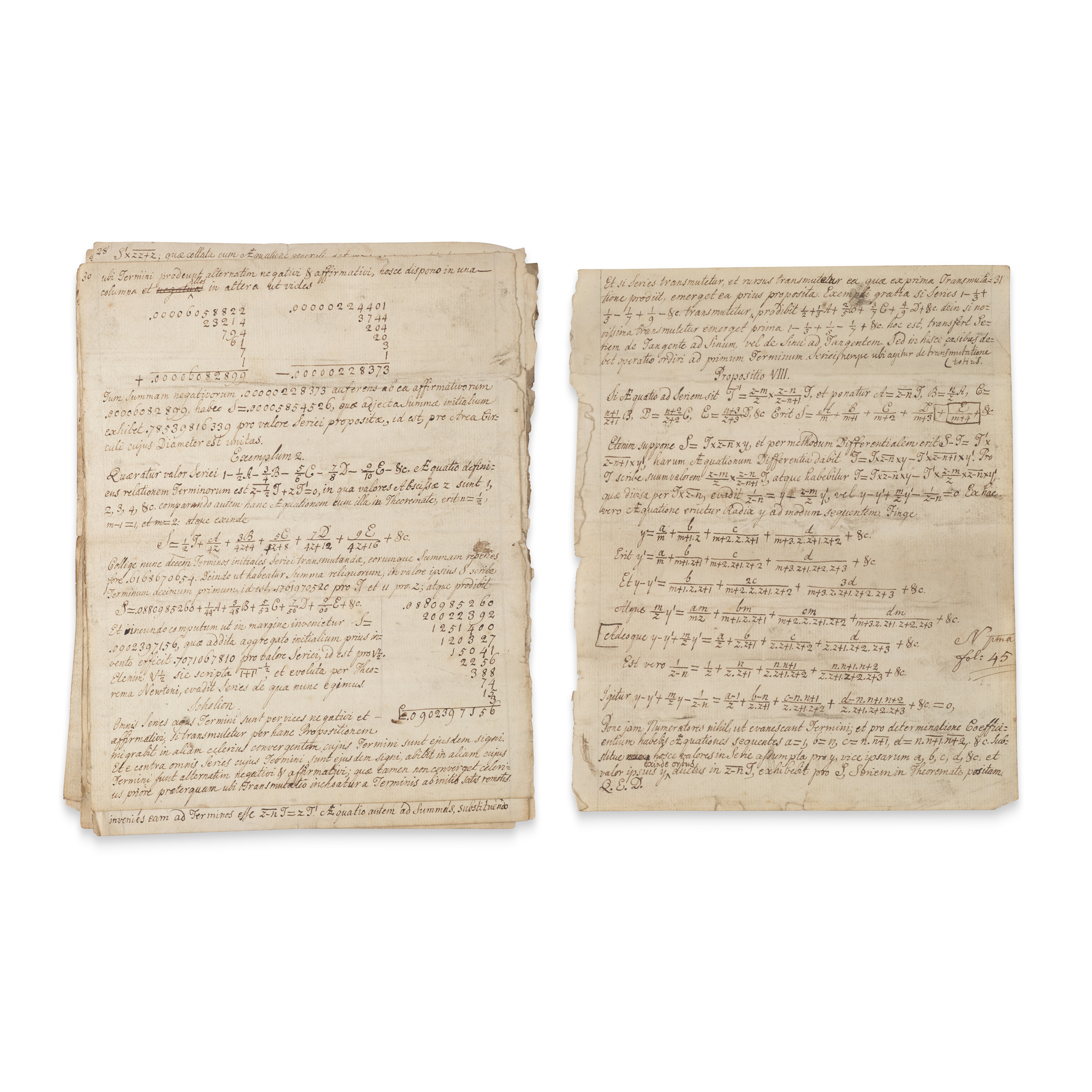
Stirling, James (1692-1770)
'Methodus Differentialis sive Tractatus de Summatione et Interpolatione Serierum Infinitarum'
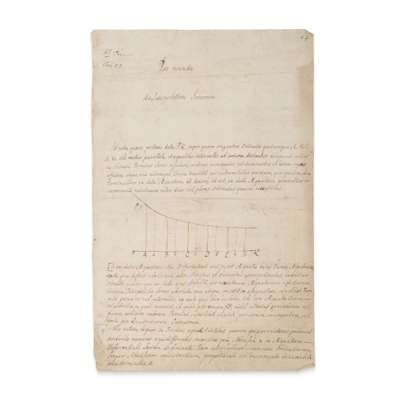
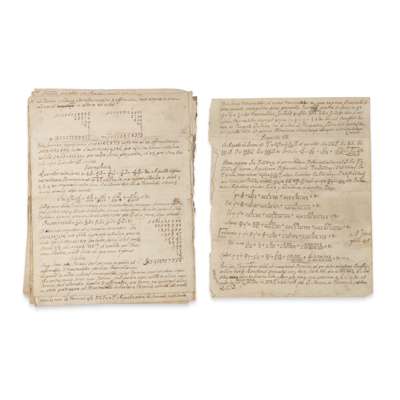
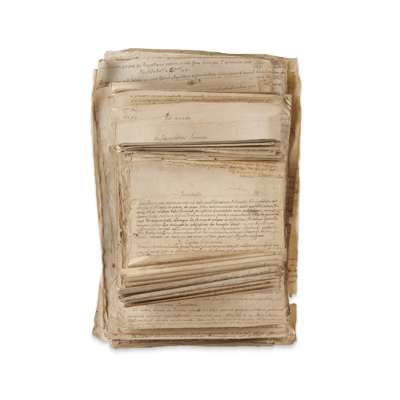
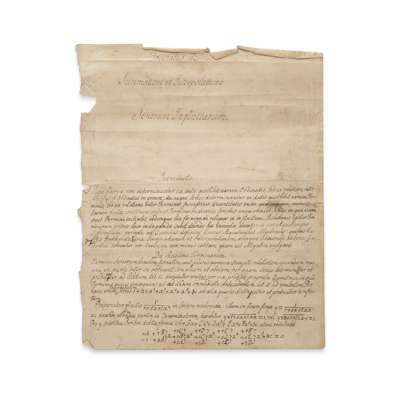


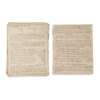
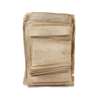
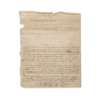
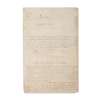
The Library of James Stirling, Mathematician
Auction: 23 October 2025 from 13:00 BST
Description
author's holograph manuscript, c.1730, written in ink on loose leaves, ‘Pars Prima’ comprising 64 numbered pages measuring 190 x 230mm, followed by ‘Pars Secunda’ being numbered pages 64 [i.e.65]-111 [i.e. 112] on larger leaves measuring 20 x 31cm to 22.5 x 36cm, the text including the published introduction but without the preface or errata, verso of the final leaf (with Propositio XXXIII recto) with Stirling's recommended title ('Methodus Differentialis …') and notes to the printers (‘If there be any room left in the last page, it may be filled up with Errata, but in case there be no room left, the Errata may be put in the end of the preface’ and ‘I kept the boy above a quarter of an hour here; send me the rest of the Leaves that are printed off & a proof of this as soon as you can, because I must look it over and see if there are any Errata’). Occasional corrections, variable light soiling, a few small chips and losses to edges
Footnote
James Stirling's holograph manuscript of his masterpiece and ‘principal contribution to mathematics' (ODNB), which introduced the Stirling numbers and Stirling's formula. Published in 1730, the Methodus is a greatly expanded version of his ‘Methodus differentialis Newtoniana illustrata’, a paper communicated to the Royal Society in 1719 in response to Newton's own ‘Methodus differentialis', which had been written in 1676 but was not published until 1711 with its inclusion by William Jones in the Analysis per quantitatum series, fluxiones, ac differentias. During the 1720s Stirling was busy with his work as a tutor at Watts's Academy in Little Tower Street, Covent Garden, delaying his completion of the final text.
The introductory section of the works contains 'Stirling's discussion of what are now called "Stirling numbers" (important in modern combinatorial theory) and in example 2 of proposition 28 there is his version of ‘Stirling's formula’ for approximating to the logarithm of a large factorial (an early example of an asymptotic series)' (ODNB). 'The Methodus differentialis … is surely one of the early classics of numerical analysis. It contains not only the results and ideas for which Stirling is chiefly remembered today (the Stirling numbers, Stirling’s interpolation formula, Stirling's formula for ln n!), but also a wealth of material on transformations of series and limiting processes. Inverse factorial series, especially hypergeometric series, are much in evidence and asymptotic series … also appear. Interpolation and quadrature are discussed and there is an impression collection of calculations throughout to illustrate the efficacy of the methods presented. Stirling's book was well received by his contemporaries … [and] the book's influence has extended over more than two and a half centuries' (Tweddle, James Stirling's Methodus Differentialis, p. 1).
Literature:
Ian Tweddle (ed.), James Stirling's Methodus Differentialis: An Annotated Translation of Stirling's Text, London, 2003.
Niccolo Guicciardini, The Development of Newtonian Calculus in Britain 1700-1800, Cambridge, 1989, p. 33 et seq.









